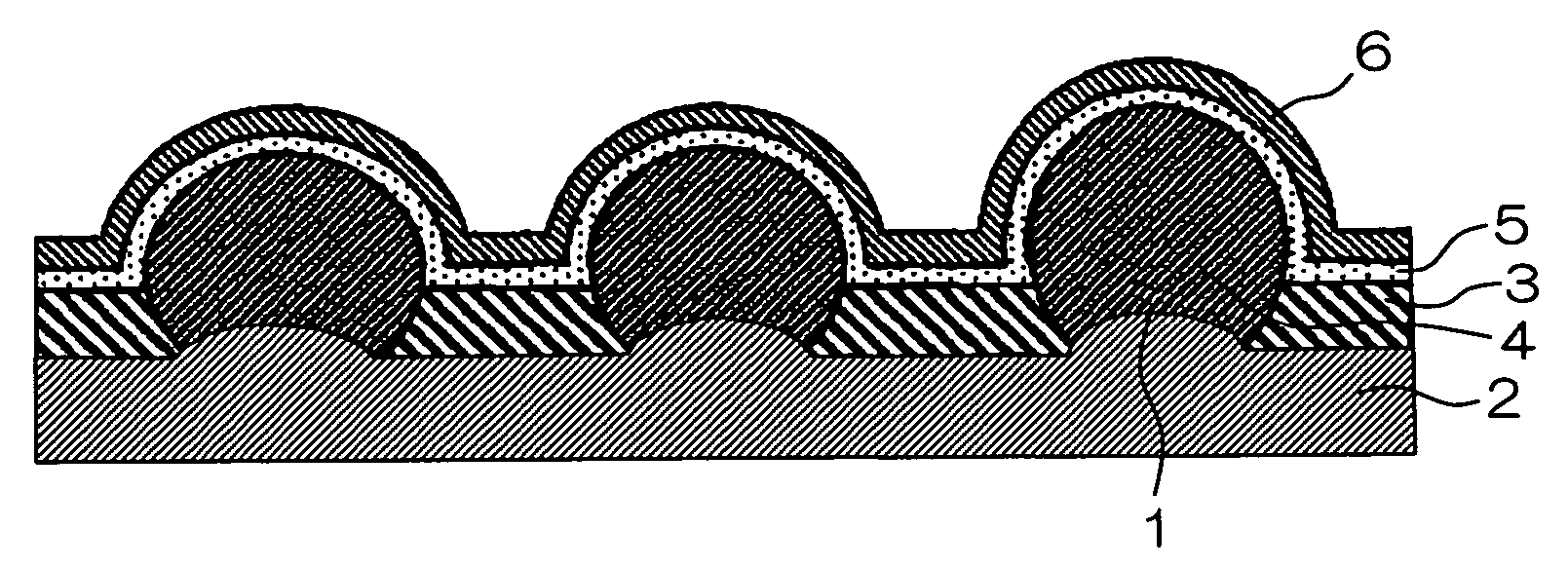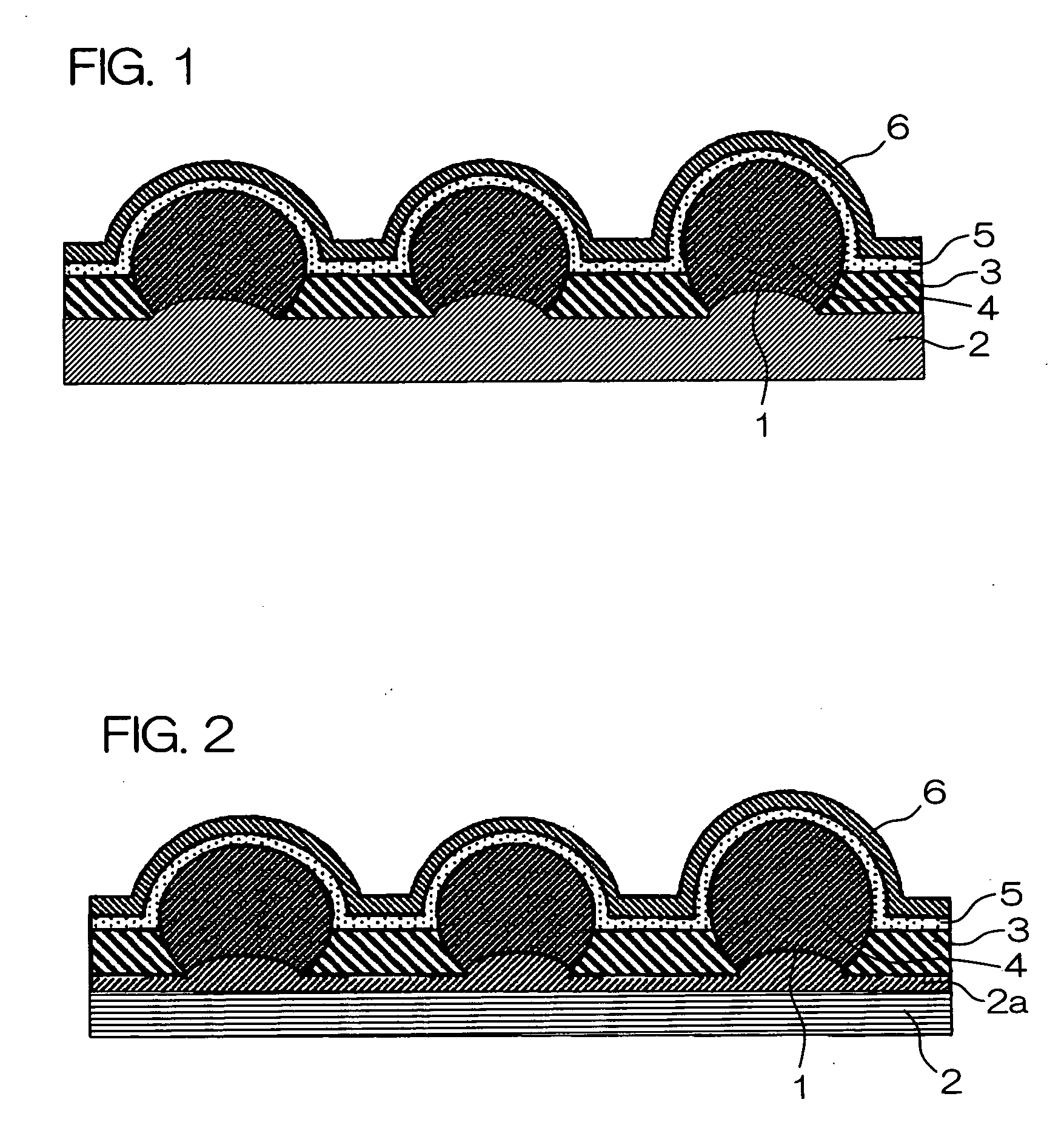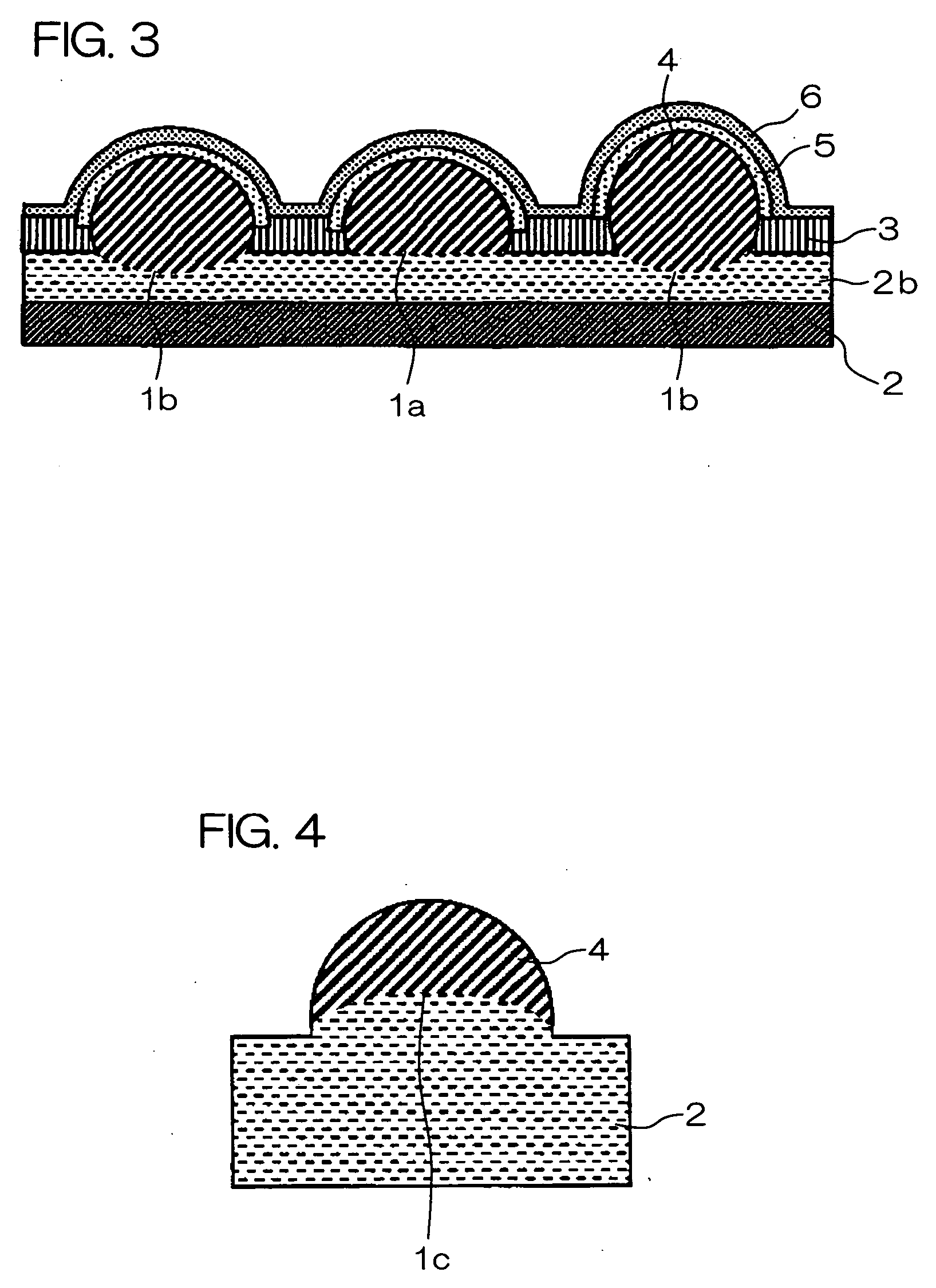Photoelectric conversion device and method of manufacturing the same
a technology photoelectric conversion device, which is applied in the direction of sustainable manufacturing/processing, climate sustainability, semiconductor devices, etc., can solve the problems of low photoelectric conversion efficiency of photoelectric conversion device using crystal semiconductor particles, difficult to apply pastes to photoelectric conversion devices, etc., and achieves high photoelectric conversion efficiency and power generation efficiency of photoelectric apparatus.
- Summary
- Abstract
- Description
- Claims
- Application Information
AI Technical Summary
Benefits of technology
Problems solved by technology
Method used
Image
Examples
example 1
[0079] A conductive substrate 2 of aluminum quality whose boron content is changed into various values was degreased using a sodium hydroxide (NaOH) solution and was then neutralized using a nitric acid (HNO3) solution, to clean its surface. A plurality of p-type crystal semiconductor particles 4 composed of p-type silicon particles having a diameter of about 0.5 mm from which a surface oxide layer was removed using a hydrofluoric acid (HF) solution were arranged on the conductive substrate 2, and were heated at 600 to 630° C. for one to ten minutes, to diffuse and join a lower part of each of the p-type crystal semiconductor particles 4 into and to the conductive substrate 2.
[0080] Polyimide was then used as an insulator 3, was applied so as to have a thickness of about 100 μm between the p-type crystal semiconductor particles 4, was dried at 200° C. for thirty minutes, and was then calcined at 350° C. for one hour, to form the layered insulator 3.
[0081] An n-type semiconductor l...
example 2
[0088] A boric acid solution whose boron concentration is changed into various values was applied to a conductive substrate 2 of aluminum quality whose surface was cleaned by being degreased using a sodium hydroxide solution and then neutralized using a nitric acid solution, followed by drying, to produce conductive substrates 2 respectively having boron compound layers 2c that differ in amount of boron per unit area. A plurality of p-type silicon particles having a diameter of about 0.5 mm from which a surface oxide layer was removed using a hydrofluoric acid solution were arranged on the boron compound layer 2c, and were heated at 600 to 630° C. for one to ten minutes, to diffuse and join a lower part of each of the p-type silicon particles into and to the conductive substrate 2.
[0089] Polyimide was then used as an insulator 3, was applied so as to have a thickness of about 100 μm between the p-type silicon particles, was dried at 200° C. for thirty minutes, and was then calcined...
example 3
[0093] A surface of each of p-type crystal semiconductor particles 4 having an average particle diameter of 400 μm to which a small amount of boron (B) was added as a p-type dopant was washed, followed by thermal diffusion at 850° C. for thirty minutes in a POCl3 atmosphere, to form an n-type silicon layer as an n-type semiconductor layer 5 on the surface of the p-type crystal semiconductor particle 4. At this time, a portion into which boron is not diffused was covered with silicon oxide, to form an n-type silicon layer in only a necessary portion.
[0094] One layer of p-type crystal semiconductor particles 4 each having an n-type silicon layer formed therein was then densely disposed on the conductive substrate 2 made of aluminum, to change diffusion and junction conditions such as junction temperature, junction time, temperature rise speed, and temperature fall speed in various ways, thereby producing samples in which the conductive substrate 2 and the p-type crystal semiconductor...
PUM
| Property | Measurement | Unit |
|---|---|---|
| thickness | aaaaa | aaaaa |
| temperature | aaaaa | aaaaa |
| thickness | aaaaa | aaaaa |
Abstract
Description
Claims
Application Information
 Login to View More
Login to View More - R&D
- Intellectual Property
- Life Sciences
- Materials
- Tech Scout
- Unparalleled Data Quality
- Higher Quality Content
- 60% Fewer Hallucinations
Browse by: Latest US Patents, China's latest patents, Technical Efficacy Thesaurus, Application Domain, Technology Topic, Popular Technical Reports.
© 2025 PatSnap. All rights reserved.Legal|Privacy policy|Modern Slavery Act Transparency Statement|Sitemap|About US| Contact US: help@patsnap.com



